
An earlier post looked at 10 of England’s 33 designated Areas of Outstanding Natural Beauty. Technically, England has 34 but it shares one of those with Wales. In this post we will look Wales’ five AONBs which span some of the country’s most scenic coastline and countryside.
1. Wye Valley / Dyffryn Gwy
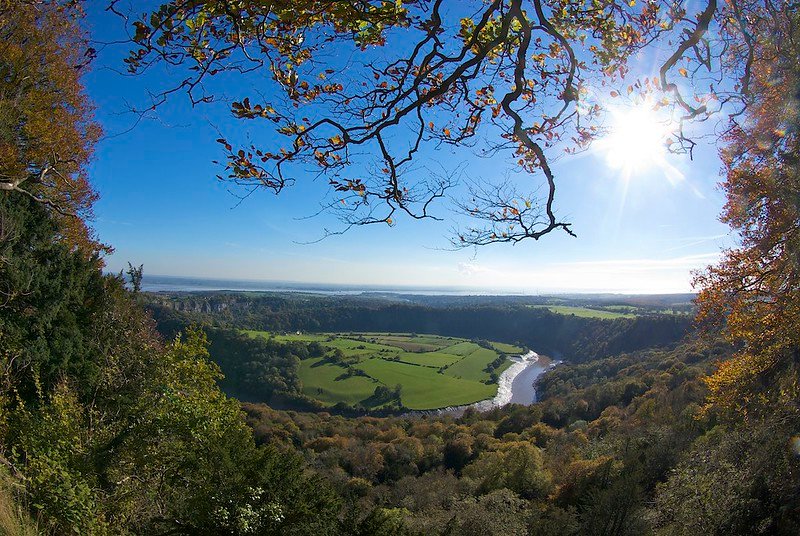
The Wye Valley AONB covers a 58 mile stretch of the River Wye that runs from Hereford to Chepstow. As such, it is located in both England and Wales. This gorgeous expanse of wooded valley has long attracted walkers, writers, kayakers and many others. We recently wrote about one town in the area – the relaxing Ross-on-Wye. But there is so much more to explore. In addition to the river valley, woodlands, and limestone gorges, castles and forts dot the border landscape. The remains of Tintern Abbey in Monmouthshire mark the site of the first Cistercian abbey in Wales, while former mining sites tell of the region’s industrial past. Wildlife enthusiasts will be keen to search for signs of the Valley’s populations in deer, dormice, and horseshoe bats. And if you’re lucky, you might catch a glimpse of a beaver, some of the first to be reintroduced to the wilds of the UK.
Learn more about visiting Wye Valley at Wye Valley AONB.
2. Gower / Gŵyr
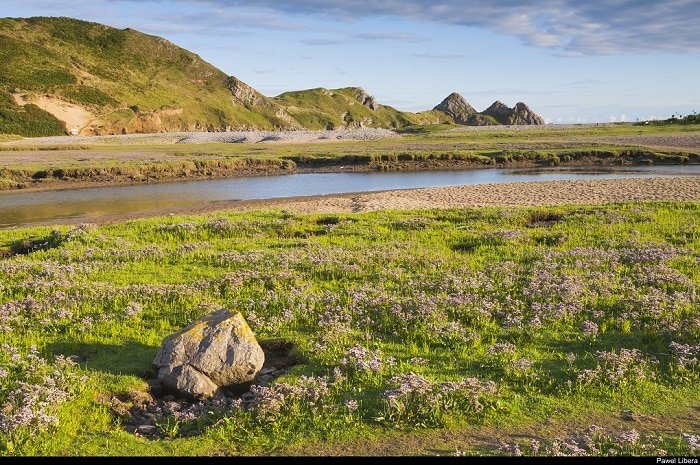
Gower, also known as the Gower Peninsula, was the first area in the UK to be designated an AONB – back in 1956. Best known for its 19 miles of South Wales coastline, Gower AONB covers a total area of almost 73 square miles and features a variety of landscapes, including sand dunes, long stretches of beach, woodlands, and grassland. In the summer, tourists flock to the beaches and surfers take the waters. But Gower also has a rich heritage of farming and fishing. Walkers and cyclists enjoy the views, the wildlife, and the many ancient monuments (83 to be precise). In June each year, people come for the Gower Walking Festival, a week-long event of guided walks and activities.
For more information, visit Gower AONB.
3. Llŷn
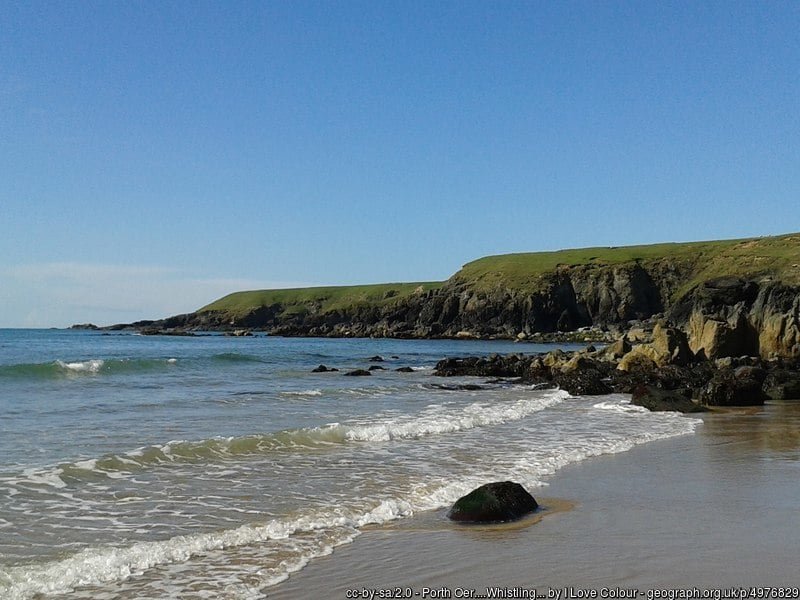
The Llŷn Peninsula covers 60 square miles of volcanic hills and coastline in northwest Wales. It is west of Snowdonia National Park and visible from Anglesey, but ironically because of its proximity to both areas, it is often overlooked by tourists. The Wales Coastal Path runs through Llŷn and so the area is excellent for walkers. In addition to enjoying views across the Irish Sea, visitors can discover Iron Age forts, peaceful seaside coves, and stunning clifftops. The surrounding sea waters are a Special Area of Conservation because of the rich variety of marine life. And if you’re interested in learning Welsh, stop by the National Welsh Language Centre in the village of Nant Gwrtheyrn.
Learn more at Llŷn AONB.
4. Anglesey / Ynys Môn
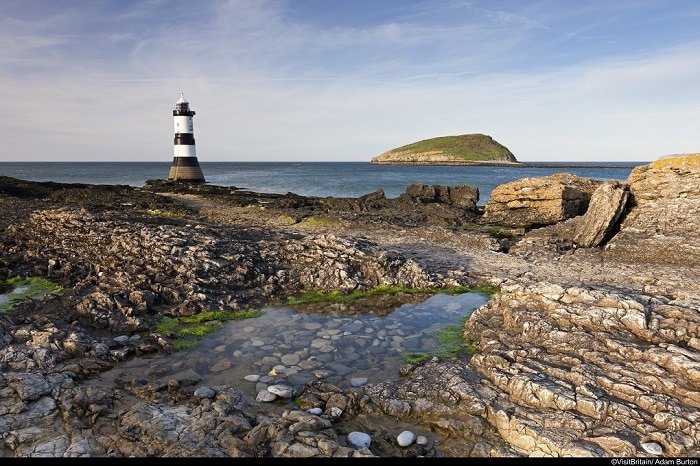
Anglesey AONB encompasses a large part of the island’s coastline, as well as Holyhead Mountain and Mynydd Bodafon. All in all, one third of the island has the AONB designation. Many regions are important wildlife habitat sites and so also have various other conservation designations, including Special Areas of Conservation, Special Protection Areas, and Sites of Special Scientific Interest. Porpoises and Marsh Fritillary butterflies are just two examples of the varied and beautiful wildlife to be found here. Anglesey is also home to 58 ancient monuments, many dating to the Bronze Age. Meanwhile, food lovers can enjoy a rich selection of local produce, including cheese, chocolate, and wine. If walking the island’s coastline isn’t to your liking, why not try cycling or see it from the water in a kayak?
Learn more at Visit Anglesey.
5. Clwydian Range and the Dee Valley / Bryniau Clwyd a Dyffryn Dyfrwdwy
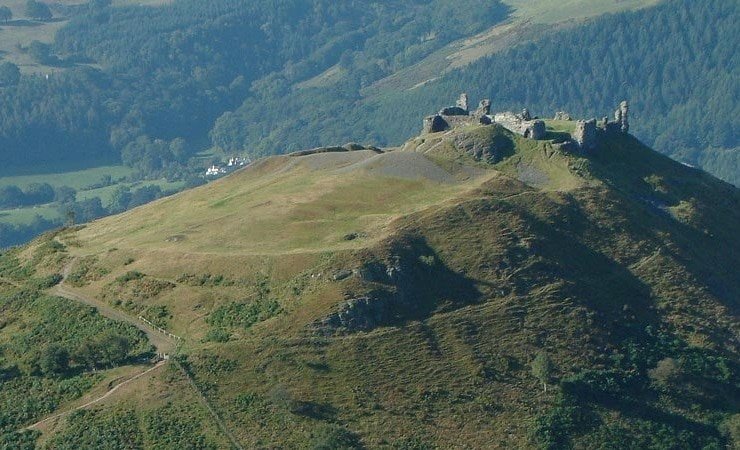
The Clywdian Range AONB grew in late 2011 with the addition of Llangollen and the Dee Valley. The extension added numerous historical and natural landmarks, including Chirk Castle, Horseshoe Pass and Esclusham Mountain. The landscape of the Clywdian Range is one of limestone cliffs and valleys that have been shaped by thousands of years of history. Remains found here date back to prehistoric times and are rich in archaeological significance. The diversity of landscape in the region also allows for a diversity of wildlife; expect to find otters, voles, rare wildflowers, moths, birds, and lichens. Offa’s Dyke National Trail starts (or ends) at Prestatyn, at the AONB’s northerly point.
Learn more at Clwydian Range and Dee Valley AONB.


